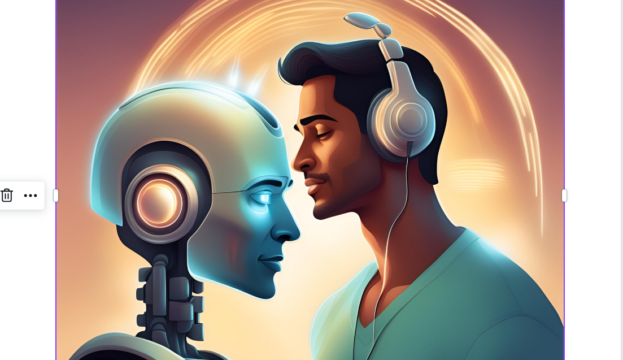2022 is here, and here is what the experts predict about industry in another tech rich year as we continue the fight against COVID-19.
With lockdowns plaguing half of 2020-2021, communication became a focused area in business and personal relationships last year. Remote and hybrid working, online dating, video conferencing, all saw disruption.
Read more: FinTech 2022: Prioritising data privacy & CX with AI & blockchain while empowering MSMEs
For example, Aisle, a high-intent Indian dating app, recently announced that 90% young people are now comfortable telling their families that they met their partner on a dating app.
COVID-19 recovery resulted in quick technological advancements and a dramatic transformation of digital experiences over the last several months. As organisations and lifestyles saw rapid change, reliance on technology increased, radical alternatives replacing traditional technology.
“Organisations no longer compete just on the basis of products or services; instead, they compete on the basis of seamless, personalised, connected, and intuitive experiences that are remembered,” says Vishal Agrawal, MD of Avaya India and SAARC, an American multinational tech company specialising in cloud communications and workstream collaboration solutions.
Virtually connected, with a hybrid workforce, the face of industry as a whole is changing. What can we expect from 2022?
Virtually connected, with a hybrid workforce, the face of industry as a whole is changing. What can we expect from 2022?
The Tech Panda gathered some opinions and foresights.
Cloud Will Lead the Way
Agrawal predicts that AI, Machine Learning, and cloud will lead the way in most industries.
“Going forward, we will see greater emphasis on AI, Machine Learning, and cloud technologies being incorporated into many industries such as healthtech, EdTech, FinTech, and others, as well as automated contact centres that will further enhance customer experiences,” he says.
Going forward, we will see greater emphasis on AI, Machine Learning, and cloud technologies being incorporated into many industries such as healthtech, EdTech, FinTech, and others, as well as automated contact centres that will further enhance customer experiences
As cloud adoption outpaces on-premise growth, distributed architecture will become table-stakes for security strategies, says Adrian Ludwig, Chief Trust Officer, Atlassian.
“The adoption of cloud is accelerating and will soon eclipse on-premise growth. What this means for security teams is that they’ll need to look ahead and eliminate lateral movement by moving to an architecture that’s broadly distributed and primarily consists of software-as-a-service (SaaS) applications,” he says.
Customer Will Be King
Vaibhav Kshatriya, Director, Channels and Services Sales, Avaya, adds that organisations have learned the value of customer experience and the year ahead will focus on that.
“Organisations have understood that increasing the quality of customer and employee experiences is one of the most critical differentiator and promoters of brand affinity today. Although operational efficiency stood at a standstill for most of organisations, industry leaders and technology enthusiasts were able to leverage new-age tech and develop innovative solutions to build resilience among businesses,” he says.
Companies will develop value-driven channel systems with the support of a cloud application ecosystem designed to empower the digital workplace and give ‘everything customers’ a ‘composed’ experience
“Companies are recognising that monolithic programs can’t meet people’s demands in the cloud, and that experiences must be ‘composed’ for ‘everything customers’. Therefore, going forward, companies will develop value-driven channel systems with the support of a cloud application ecosystem designed to empower the digital workplace and give ‘everything customers’ a ‘composed’ experience,” he adds.
Influencer Marketing Will See More Investment
2021 was a stacked year for influencer marketing. The video remained a top tactic, focus on the necessary authenticity factor continued, and value-driven content took centre stage. Not to mention, web3 technologies reengineered the creator economy landscape.
Ankit Agarwal, Founder of Do Your Thng (DYT), a tech-driven branded content marketplace, says the most pivotal difference, though, was how influencers were used, with brands preferring to partner with micro-influencers and niche creators.
“The appeal of these creators was and continues to be rooted in their ability to reach a targeted and highly engaged audience with relatable content,” he says.
With the industry showing no signs of slowing down, 2022 will carry the momentum, with more marketers investing a larger budget next year. Voice, videos, and regional content will likely outshine all other forms of content
However, he adds that a lot came down to how influencer campaigns were executed.
“Yes, creators drove action, encouraged impact, and were a key ingredient in any marketing strategy. But the integration of a brand into creator content had to be done thoughtfully, ensuring synergy and brand safety. That made data-driven influencer discovery paramount in 2021,” he elaborates.
“Platforms also realised there is no creator economy without the creators, making it imperative to nurture them,” he adds.
According to him, the influencer industry is set to rise high in 2022.
Read more: Startups 2022: Looking forward to funds ideas & FDI as startups emerge as an asset class
“With the industry showing no signs of slowing down, 2022 will carry the momentum, with more marketers investing a larger budget next year. Voice, videos, and regional content will likely outshine all other forms of content.
“Also, expect to see brands embracing micro and, even, nano-influencers to finally crack the code on hard engagement metrics, affordably. Influencer marketing in India is growing at a high velocity of 25% CAGR. Ask yourself why, and then, if you haven’t already, start capitalizing on it,” he says.
Serious Innovation in Social Media Sector
Social media wise, 2021 welcomed audio-only social networking. After the successful launch of Clubhouse in 2020, all major social media platforms started working on similar audio-based chat rooms.
Twitter has already released Spaces inside its app, and Facebook is also working towards introducing a Clubhouse clone.
Year 2022 will create core behaviour among the users and newly emerging social media influencers. We will see serious innovation in this segment with core use of the platform instead of the hype cycle users
Vikas Malpani, Co-Founder and CEO, Leher, a drop-in live audio/video discussion social network app, says with audio video emerging as the new champion for social media, 2022 will see new kinds of influencers.
“2021 has been a watershed year in the social media industry. New mediums like audio and video have created a new kind of network for conversations,” he says.
“Also, social media is moving away from individual-only to a community-first approach to provide a more curated experience. The sector has seen exponential growth and audio/video has established itself as the future of social,” he adds.
“Year 2022 will create core behaviour among the users and newly emerging social media influencers. We will see serious innovation in this segment with core use of the platform instead of the hype cycle users. Winners of this year will be the ones that will dominate the sector for the next decade.”
Data Ownership Back in User Hands
The lines between security, engineering, trust, privacy and compliance in an organisation will disappear, says Ludwig.
“Information privacy and compliance are now top priorities for customers in the era of cloud and distributed systems. CISOs and CSOs at global companies will be expected to lead on a proactive approach in getting ahead of rising regulatory policies and rethinking user privacy. As was the case with Atlassian, this will likely result in simplifying organisational structures to remove collaboration barriers between these interconnected teams,” he says.
Over the next five years, Web 3.0 will upend the way we think about application development
With 2020 on us, Web 3.0 is imminent, says Sri Viswanath, CTO, Atlassian.
“Over the next five years, Web 3.0 will upend the way we think about application development. Where Web 1.0 was the era of internet protocols, Web 2.0 is our current state of applications and generated content. Web 3.0 will rise as a result of the cracks in the current system, which puts user data in the hands of social media giants,” he says.
“Powered by blockchain technology, this new version of the web will usher in a decentralised internet and put data ownership back in the hands of the user. For the industry, it will completely change the way we approach application development and privacy,” he adds.
From a Project- to Product-Based Operating Model
Archana Rao, CIO, Atlassian, says the success of services will count outcome not output.
“Every business unit in an enterprise will operate in an agile fashion with their dedicated IT partner changing the way business units transform and build new capabilities,” she says.
Every business unit in an enterprise will operate in an agile fashion with their dedicated IT partner changing the way business units transform and build new capabilities
“With IT now sitting at the centre of business, these teams will only grow in size and partner with more departments to deliver long-term business value. The success of each service they provide will now be measured by outcomes, instead of output, and require them to move from a project- to product-based operating model,” she predicts.
Improved Work Environment
Rao also foresees higher adoption of more asynchronous collaboration tools at the workplace.
“Employee engagement and burnout prevention will remain at the top of the agenda for IT. Distributed work, competition for talent, and increasing levels of burnout will drive IT leaders to invest in building a world-class, digital employee experience,” she predicts.
Employee engagement and burnout prevention will remain at the top of the agenda for IT
“This will include the adoption of more asynchronous collaboration tools, having all employees on the same cloud platform, and making information across the business more open,” she adds.
“Large firms will also make small infrastructure expenditures as they prepare their organisations for a hybrid workforce by digitally transforming their workforce and developing future workspaces,” Agrawal adds.
Secure Systems with Empathy
“More empathy, not technical skills, is key to building resilience in 2022,” says Ludwig.
“We’ll begin to realise that security is not just a technical problem, it’s an organisational and human problem,” he predicts.
We’ll begin to realise that security is not just a technical problem, it’s an organisational and human problem
“As an industry, we’ve learned that it’s not enough to mandate security protocols and increase training. Instead, security teams will need to exercise empathy in order to better understand developers’ top concerns and motivating factors,” he explains.
“For example, you will have far more resilient systems if your development environment includes a strong incentive structure or removes friction for developers to perform security testing and make security improvements,” he says.
A new year brings new beginnings. Industry has learnt much in the past year, having been exposed to challenges posed by the ‘great reset’. It’s time to put these learnings to practice. The Tech Panda wishes you luck.












